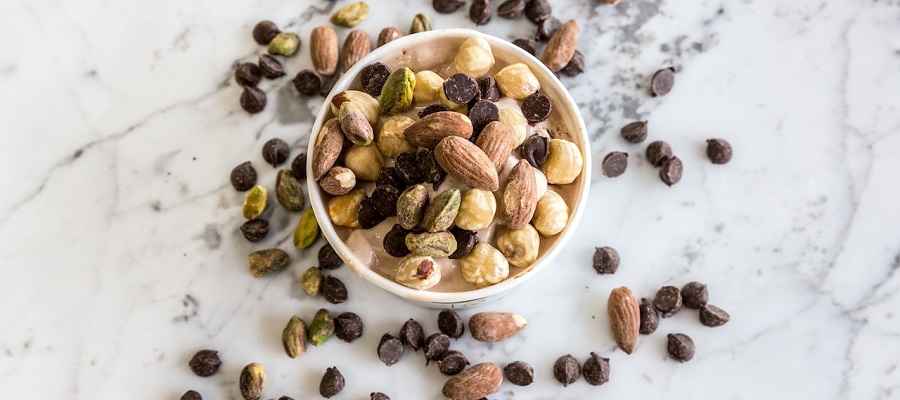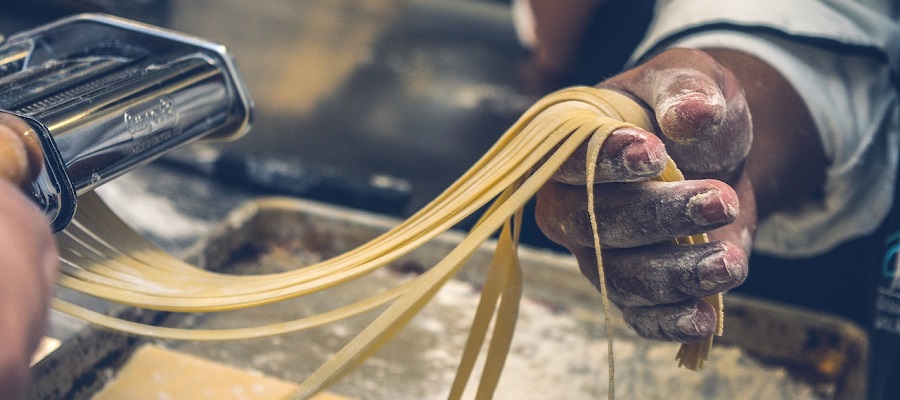There are many different types of nuts, each with its own unique flavor, texture, and nutritional profile. Here are some common types of nuts and their potential benefits:
-
Almonds: These nuts are rich in monounsaturated fats, fiber, and vitamins and minerals such as vitamin E, magnesium, and potassium. They may help lower cholesterol levels and the risk of heart disease.
-
Brazil nuts: These nuts are a good source of selenium, a mineral that plays a role in thyroid function and immune system health. They are also high in monounsaturated fats and may help lower cholesterol levels.
-
Cashews: Cashews are a good source of copper, which is important for the production of collagen and maintaining healthy bones and connective tissue. They are also a good source of magnesium, which plays a role in bone health and muscle function.
-
Hazelnuts: Hazelnuts are a good source of vitamin E, which is an antioxidant that helps protect cells from oxidative stress. They are also high in monounsaturated fats and may help lower cholesterol levels.
-
Macadamia nuts: These nuts are high in monounsaturated fats and may help lower cholesterol levels. They are also a good source of manganese, which is important for bone health and metabolism.
-
Peanuts: Peanuts are a good source of protein and are rich in monounsaturated fats. They are also a good source of niacin, which is important for energy production and maintaining healthy skin and nerves.
-
Pecans: Pecans are a good source of vitamin E and are rich in monounsaturated fats. They are also a good source of manganese, which is important for bone health and metabolism.
-
Pistachios: These nuts are a good source of protein and fiber, as well as vitamin B6 and thiamin, which are important for metabolism and nerve function. They are also a good source of potassium, which is important for maintaining healthy blood pressure levels.
-
Walnuts: Walnuts are a good source of omega-3 fatty acids, which are important for brain health. They are also a good source of antioxidants and may help lower cholesterol levels.
It's important to note that nuts are high in calories and fat, so it's important to consume them in moderation as part of a balanced diet.
origin and feed values of different types of nuts
-
Almonds: Almonds are native to the Middle East and South Asia, and are a popular snack and ingredient in many dishes. They are a good source of healthy fats, protein, and vitamins and minerals.
-
Brazil nuts: Brazil nuts are native to South America, and are often eaten as a snack or used as a topping for salads and other dishes. They are a good source of selenium and other nutrients.
-
Cashews: Cashews are native to South America, and are often used in cooking and baking. They are a good source of protein, healthy fats, and various vitamins and minerals.
-
Hazelnuts: Hazelnuts, also known as filberts, are native to Europe and Asia, and are often used in baking and as a topping for desserts. They are a good source of healthy fats and various vitamins and minerals.
-
Macadamia nuts: Macadamia nuts are native to Australia, and are often eaten as a snack or used in baking. They are high in healthy fats and various nutrients.
-
Peanuts: Peanuts are not technically nuts, but rather legumes. They are native to South America, and are often used in cooking and as a snack. They are a good source of protein and various vitamins and minerals.
-
Pecans: Pecans are native to North America, and are often used in baking and as a topping for salads and other dishes. They are a good source of healthy fats and various vitamins and minerals.
-
Pistachios: Pistachios are native to the Middle East and South Asia, and are often eaten as a snack or used in cooking. They are a good source of protein, fiber, and various vitamins and minerals.
-
Walnuts: Walnuts are native to the Middle East and Central Asia, and are often eaten as a snack or used in baking. They are a good source of healthy fats, protein, and various vitamins and minerals.
The prices of different types of nuts
The prices of different types of nuts can vary depending on a number of factors, such as the type of nut, the quantity you are purchasing, the place of purchase, and the time of year. Here are some general ranges for the prices of different types of nuts:
-
Almonds: Almonds can range in price from $5 to $20 per pound, depending on the variety and whether they are raw, roasted, or flavored.
-
Brazil nuts: Brazil nuts can range in price from $7 to $20 per pound, depending on the variety and whether they are raw, roasted, or flavored.
-
Cashews: Cashews can range in price from $7 to $20 per pound, depending on the variety and whether they are raw, roasted, or flavored.
-
Hazelnuts: Hazelnuts can range in price from $7 to $20 per pound, depending on the variety and whether they are raw, roasted, or flavored.
-
Macadamia nuts: Macadamia nuts can range in price from $20 to $30 per pound, depending on the variety and whether they are raw, roasted, or flavored.
-
Peanuts: Peanuts can range in price from $3 to $8 per pound, depending on the variety and whether they are raw, roasted, or flavored.
-
Pecans: Pecans can range in price from $10 to $20 per pound, depending on the variety and whether they are raw, roasted, or flavored.
-
Pistachios: Pistachios can range in price from $7 to $20 per pound, depending on the variety and whether they are raw, roasted, or flavored.
-
Walnuts: Walnuts can range in price from $7 to $20 per pound, depending on the variety and whether they are raw, roasted, or flavored.
It's important to note that these are just general ranges and that the actual prices you pay may vary. It's also worth noting that nuts are generally more expensive when they are shelled, as it requires more labor to remove the shells.


